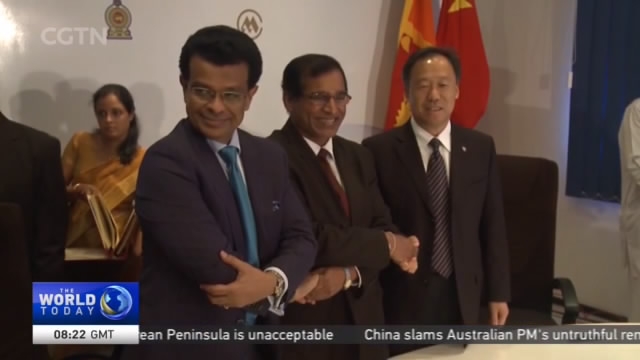
17:24, 09-Dec-2017
Hambantota Port: Joint venture between China and Sri Lanka begins operations

The joint venture of Hambantota Port between China Merchants Port Holdings and the Sri Lanka Ports Authority begins operations today. The JV agreement to develop the strategically located port is expected to benefit not only the two nations but also Belt and Road countries and beyond.
Being the bridge between Africa and the Middle East on one side and Southeast Asia on the other, Hambantota is right in the middle of vital energy supply lines in the Indian Ocean. As an essential port to connect the Middle East and East Asia, Hambantota is also the strategic link in China's 21st Century Maritime Silk Road.
YI XIANLIANG CHINESE AMBASSADOR TO SRI LANKA "The agreement for Hambantota could be seen as an example for further cooperation with countries in South Asia."
An agreement was signed in July to develop Hambantota Port in southern Sri Lanka. China Merchants Port Holdings agreed to pay 1.12 billion US dollars for an 85 percent stake of the port, with the lease agreement covering 99 years.
PARAKRAMA DISSANAYAK PRESIDENT, SRI LANKA PORTS AUTHORITY "As you know, this is a historic moment and a historic investment."
Under the deal, the Chinese side will take charge of the commercial and administrative management operations of the port. Under the Belt and Road Initiative, the agreement is expected not only to be a win-win for both China and Sri Lanka, but will also benefit countries all over the world.
PARAKRAMA DISSANAYAK PRESIDENT, SRI LANKA PORTS AUTHORITY "Hambantota Port will make a strong impact in south Asia and I think it will, beyond South Asia in the Middle East as well as the African continent."
China and Sri Lanka will carry out continuous efforts to turn the port into an international shipping hub linking South Asia with Africa. In the future, the port will also connect with the Logistics and Industrial Zone in Hambantota to further develop the local economy.

SITEMAP
Copyright © 2018 CGTN. Beijing ICP prepared NO.16065310-3
Copyright © 2018 CGTN. Beijing ICP prepared NO.16065310-3